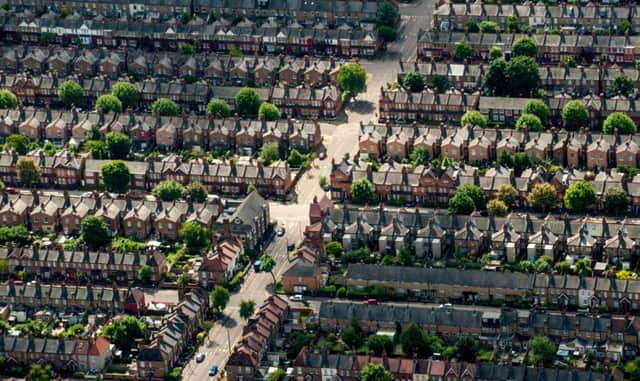Scottish house-price rises are lowest in UK


However, Scotland saw the smallest rise with an annual increase of 5.4 per cent and the average property now costing £141,872.
While all areas saw annual price increases for the fourth quarter in a row, the largest was in London where property values leapt by 25.8 per cent annually, marking the highest growth rate for the capital since 1987 and breaking through the £400,000-average mark for the first time.
Advertisement
Hide AdAdvertisement
Hide AdThe annual rise is the biggest jump seen since January 2005.
Nationwide said that if London was excluded from the figures, UK prices were up by 10.7 per cent compared to the second quarter of 2013.
Strong annual price gains were not just confined to London and southern England. In southern Scotland, which includes Ayrshire and the Borders, prices are up by 14 per cent on the previous year, as are prices in Belfast in Northern Ireland.
The most expensive area for buying a home north of the Border was Aberdeen City, where the average price is now £263,986 – an annual change this quarter of 13 per cent.
The least expensive area was South Lanarkshire, where a three per cent change this quarter saw the average house price rise to £134,631.
Robert Gardner, Nationwide’s chief economist, said the latest figures show there is still “significant variation” in the performance of the housing market across the UK.
He also said that recent moves by the Bank of England’s Financial Policy Committee to ensure the UK housing market does not overheat were unlikely to have a “significant impact” on housing transactions or the pace of price growth in the near term.
“Most major lenders are already using a stress rate in their affordability calculation that is broadly consistent with the new stress test,” he said. “Similarly, the proportion of house purchase loans at or above 4.5 times borrowers’ income is currently some way below the 15 per cent cap.”
Advertisement
Hide AdAdvertisement
Hide AdAcross the UK, prices are just under 1 per cent above their pre-financial crisis peak, but when London is taken out of the equation they are 0.4 per cent below the previous high.
David Marshall, business development manager at the Edinburgh Solicitors’ Property Centre, said: “A lot of the growth you see at UK level is being driven by London and the south east. We are certainly not seeing the same sharp increase. In Edinburgh and the Lothians, annual growth is closer to 3-5 per cent.
“Another important factor is that the number of houses on the market is higher than in previous years. It is a matter of supply and demand, with more houses giving greater choice and moderating prices.”
Graeme Brown, director of Shelter Scotland, said: “While the rise in house prices across Scotland is lower than the average across the UK, the cost of buying a house is still rising much faster than people’s incomes.
“Set against the background of stagnant wages, job insecurity and the high cost of living, this is not good news for people trying to get on the property ladder.”